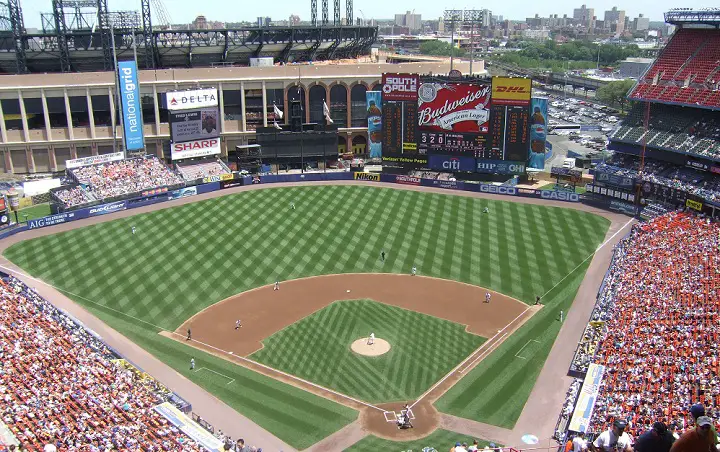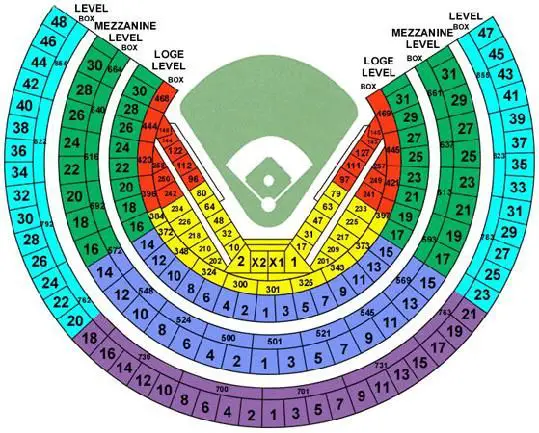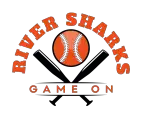Tenant: New York Mets
Capacity: 57,333
Surface: Grass
Cost: $25.5 Million
Opened: April 17, 1964
Closed: September 28, 2008
Demolished: Winter 2008-09
Dimensions: 338-L, 371-LC, 410-C, 371-RC, 338-R
Architect: Praeger, Kavanaugh, Waterbury
Public Financing: 100% general obligation bonds
Private Financing: None
Former Name(s): None
Naming Rights: None – Named in honor of William A. Shea
History Of Shea Stadium
For over a decade, there were many discussions pondering over a new stadium that wanted to be built in Queens. Walter O’Malley, who was the owner of the Brooklyn Dodgers, began his plans for the new stadium to keep the team in Brooklyn. This was after Ebbets Field had started to fall apart and needed replacing in the 1940s.
However, the Dodgers, unfortunately, couldn’t secure land in the neighborhood. A New York City official countered the plans for a new ballpark in Brooklyn, instead offering the land in Queens. The Dodgers declined this and instead moved to Los Angeles in 1957. The New York Giants also moved to California, leaving the New York metropolitan area with only one baseball team.
This didn’t last for long, though, as New York City Major Robert Wagner sent William A. Shea on a mission with four other lawyers. The mission was to secure a new National League franchise to reside in New York.
First, they tried to lure in the Reds, followed by the Pirates and the Phillies. However, they failed with all of these teams. After a few months of trying and failing, Shea started the Continental League, leading Major League Baseball to award New York and Houston their own franchises, starting to play in 1962.
In order for New York City to be awarded their new team; however, a new stadium needed to be built for them. The land was secured and the ground was first broken on October 28, 1961. This would soon be the home of the New York Mets, although it took over two years to build.
The New York Mets played at Shea Stadium until September 28, 2008 when their new stadium, Citi Stadium, was finished being built. This was their 45th year at Shea Stadium and in their final game they played against the Florida Marlins.
Shea Stadium was then demolished after the season was over, being used for parking for Citi Field instead.

Who / What Is It Named After
The Shea Stadium was originally going to be called Flushing Meadows Park, but it was quickly renamed the Shea Stadium after William A. Shea. It was renamed after Shea after his tireless efforts to secure a new team for New York City.
To the day that the stadium was demolished, there were no naming rights up for grabs for the Shea Stadium. This was to further honor William A. Shea.
When Did It Open
After two years of playing at the Polo Grounds while they waited for their new stadium to be built, the New York Mets were finally able to play at Shea Stadium on April 17, 1964. They played against the Pittsburgh Pirates and, unfortunately, lost their first game.
What Team Play There
The New York Mets were the team playing at the Shea Stadium from 1964 to 2008.
Another team played at Shea Stadium from 1974 to 1975 – the New York Yankees. They played at the stadium while the Yankee Stadium was being renovated. This was only for less than a year and the Shea Stadium became the sole home of the New York Mets again.
Location
Shea Stadium was located in Flushing Meadows, Corona Park, in New York City. After it was demolished in the winter of 2008/09, Shea Stadium was replaced with Citi Field. This new stadium now sits adjacent to where Shea Stadium used to stand.
The Shea Stadium was positioned near the LaGuardia Airport, which meant that you could often hear planes taking off and landing in the near distance.
Capacity (Seated & Standing)
Shea Stadium was built to be a five-tiered stadium with an overall capacity of 55,601 for seated fans. In 1964, more than 1.7 million fans filled the Shea Stadium. Once this number had been released, officials planned to add another 15,000 seats and add a dome to the top of it, although these plans were quickly diminished when research showed that the pilings couldn’t hold the additional weight. So, the capacity remained at 55,601 from its initial opening to when the stadium closed.
What Are The Stadium Dimensions
The dimensions of Shea Stadium remained the same from start to finish, and were as follows:
Leftfield: 338 feet
Left-center: 371 feet
Centerfield: 410 feet
Right-center: 371 feet
Rightfield: 338 feet
As you can see, Shea Stadium was a perfectly symmetrical shape. This is quite unusual to see with baseball stadiums and makes the Shea Stadium all the more aesthetically pleasing.
Seating Chart

Seats For Sale
There are a few seats for sale from Shea Stadium online, ranging from $500 to $1000. You can opt for either the blue or orange seats, coming in pairs, to keep a piece of MLB alive in your very own home.
There are also seats being sold on second-hand websites, but the prices can be quite steep. So, if you want a piece of Shea Stadium in your house, you’re going to need to be prepared to spend quite a bit of money.
Best Seats
Thanks to the construction and layout of the Shea Stadium, there were no seats that you would necessarily label as bad. The seats were all laid out in a perfect circle, wrapping all around the home plate and down towards the left and right foul poles.
The structure was massive, with five tiers of seating rising upwards over the field. The further up you were sat, the further away from the action you would be. So, the best seats were often considered on the bottom two tiers so that you could get a similar view of what the players were seeing, including you in the action instead of distancing yourself as a spectator only.
Of course, the closer you were to the home plate, the better your seats were as well. People who sat behind the home plate would be able to see as much of the action as possible without being too far away from it all.
There were 50 suites added to the press level of the stadium, making for excellent seats within. A small set of bleachers was positioned behind the left-field fence, although these would not offer as impressive seats as the suites.
Notable Features
The Shea Stadium was the first of its size to be fitted with an extensive escalator system, converting from a football gridiron to a baseball diamond with two motor-operated stands. There were also no light towers to support this adjustment, as well as all of the seats being directed to the center of the field.
Over the years, very few changes were made to the Shea Stadium. Just before the 1987 stadium, blue windscreens were added with neon artwork of the baseball players. These were some of the most notable additions and paid homage to the fan’s favorite players, making excellent attractions for fans to marvel at.
The scoreboard was 175 by 86 feet and positioned in the right field, although this was replaced in 1988 for a more impressively sized scoreboard.
One of the most notable features of the Shea Stadium was the Mets Magic Hat, which was located behind the center field fence. Whenever a Mets player homered, an apple would rise from the hat – paying homage to the Big Apple, which is a nickname for New York City.
Memorabilia
Shea Stadium was a popular baseball stadium and, as a result, still has many fans to this day. These people still enjoy selling memorabilia relating to the stadium, such as posters of the stadium, blueprints, pictures, prints, and even 3D replicas.
A quick internet search will show you plenty of memorabilia about the New York Mets and Shea Stadium, so you can pick out what you enjoy the most.
Tickets
Some fans are still selling their vintage tickets on second-hand websites such as eBay. These are excellent pieces of memorabilia for fans of the New York Mets or their initial stadium. You might even be able to find a ticket for the NYM playing another of your favorite teams!
Mascot
Shea Stadium’s mascot was Mr. Met, who was a man dressed in a Mets uniform with a baseball for a head.
Notable Events
The World Series 1967, 1973, and 2000 were all played at Shea Stadium, as well as the 1964 All-Star Game. Tom Seaver won Rookie of the Year in 1967, and the Miracle Mets caught their first World Series title in 1969.
John Franco experienced his 400th save at this stadium on April 14, 1999. Plus, Mike Piazza completed his 352nd home run as a catcher at Shea Stadium, setting the all-time record for catchers.
